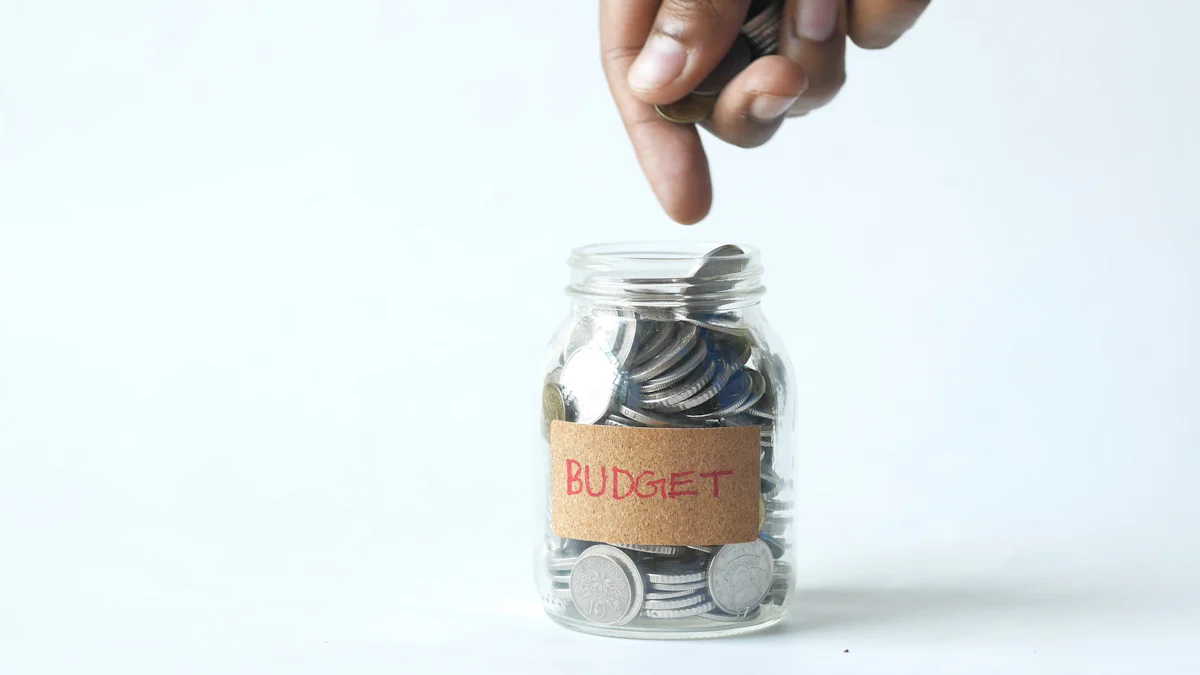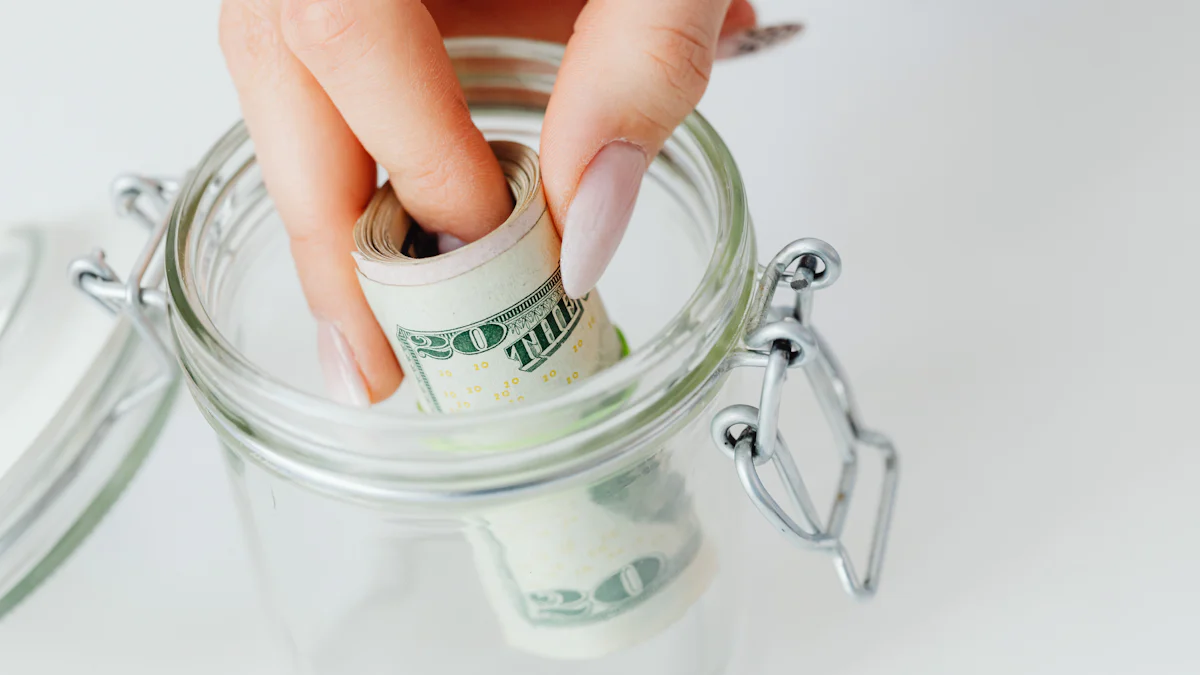How to Create a Bulletproof Emergency Fund

Life is unpredictable, and financial surprises can strike when you least expect them. Whether it’s a sudden medical bill or an urgent car repair, having a bulletproof emergency fund can be your safety net. Without one, you might find yourself relying on credit cards or loans, which only add stress.
Did you know that 21% of Americans have no emergency savings at all? Even more concerning, 54% feel stressed about not having enough saved for unexpected expenses. Starting your emergency fund today can give you peace of mind and a sense of security. It’s not just about money—it’s about protecting your future.
Key Takeaways
Begin saving now to prepare for surprise costs and lower money worries.
Try to save enough for 3-6 months of living costs.
Make a clear and realistic savings goal to stay on track.
Set up automatic savings to grow your fund easily and regularly.
Spend your emergency fund only on real emergencies, like losing a job or fixing something important, so it lasts.
Why You Need a Bulletproof Emergency Fund

The Importance of Financial Preparedness
Life throws curveballs when you least expect them. Imagine losing your job or facing a sudden medical bill. Without a financial safety net, these situations can spiral into chaos. Preparing for the unexpected is key to staying afloat during tough times.
Studies show that many people think they’re financially prepared but underestimate how much they actually need. This gap can lead to serious trouble when emergencies arise. Having a financial safety net ensures you’re ready to handle life’s surprises without derailing your financial stability. It’s not just about surviving—it’s about thriving, even in uncertain times.
Risks of Not Having an Emergency Fund
What happens if you don’t have a financial cushion? The risks are real and can be overwhelming. Here are some common emergencies that can catch you off guard:
Job loss
Medical or dental emergencies
Unexpected home repairs
Car troubles
Unplanned travel expenses
Without an emergency fund, you might rely on credit cards or loans to cover these costs. This can lead to mounting debt and financial strain. In fact, people without savings often struggle to pay bills, regardless of their income level. A financial safety net protects you from falling into this cycle and gives you the freedom to focus on solutions instead of stress.
How an Emergency Fund Provides Peace of Mind
An emergency fund isn’t just a financial tool—it’s a mental health booster. Knowing you have money set aside for unexpected expenses can ease anxiety and help you sleep better at night. It acts as a financial security blanket, offering relief during crises and reducing money-related stress.
Think of it as your personal safety net. Whether it’s a sudden car repair or a medical emergency, you’ll feel confident knowing you’re prepared. This peace of mind is priceless and contributes to your overall well-being.
How Much Should You Save in Your Emergency Fund?
General Savings Guidelines
So, how much should you save? A good rule of thumb is to aim for three to six months' worth of living expenses. This range gives you a solid cushion to handle most unexpected situations. If your job is less stable or you have dependents, consider saving six to twelve months' worth of expenses.
Starting small can make the process less overwhelming. Set an initial goal of $500 or $1,000 to build momentum. Once you hit that milestone, you’ll feel more motivated to keep going. Automating your savings is another great way to stay consistent. By setting up automatic transfers, you can grow your emergency fund without even thinking about it.
Keep your emergency fund in a separate account, like a high-yield savings account. This keeps the money accessible but reduces the temptation to dip into it for non-emergencies. Regularly review your savings to ensure it aligns with your current financial situation.
Factors to Consider When Setting Your Goal
Monthly Living Expenses
Start by calculating your monthly living expenses. Include essentials like rent, utilities, groceries, and insurance. This number forms the foundation of your emergency fund. The more accurate you are, the better prepared you’ll be.
Job Stability and Income Variability
Think about your job security. If you work in a stable industry, three months of expenses might be enough. But if your income fluctuates or your job is less secure, aim for a larger fund. This extra buffer can help you weather longer periods of uncertainty.
Family Size and Financial Responsibilities
Your family size plays a big role too. If you’re supporting children or other dependents, your expenses will naturally be higher. Factor in their needs when setting your savings goal. The more responsibilities you have, the larger your emergency fund should be.
Calculating the Right Amount for Your Emergency Fund
Once you’ve considered your expenses, job stability, and family size, it’s time to calculate your target amount. Online tools like the Emergency Fund Calculator or Emergency Fund Calculator: How Much Will Protect You? can simplify this process. These tools take your unique situation into account and provide a clear savings goal.
Remember, your emergency fund isn’t set in stone. Life changes, and so should your savings. Revisit your goal regularly to ensure it still meets your needs.
Steps to Build an Emergency Fund

Set a S.M.A.R.T Savings Goal
Setting a S.M.A.R.T savings goal is the first step in building your emergency fund. This method ensures your goal is Specific, Measurable, Achievable, Relevant, and Time-bound. Here’s how you can do it:
Assess your current financial situation. Take a close look at your income, expenses, and any existing savings.
Define your financial objectives. Decide how much you want to save for your emergency fund.
Make your goals measurable. Break your target into smaller milestones, like saving $500, then $1,000.
Ensure your goals are attainable. Be realistic about how much you can save each month.
Make your goals relevant to your life. Tailor your savings plan to your unique needs, such as job stability or family size.
By following these steps, you’ll create a clear and actionable financial plan that keeps you motivated.
Create a Bulletproof Budget
A bulletproof budget is essential for building your emergency fund. It helps you identify where your money is going and where you can cut back. Follow these steps to create one:
Set a goal. Start with a small savings target, like $500, and work your way up.
Review your expenses. Look at your monthly spending and find areas to save. For example, brewing coffee at home instead of buying it daily can add up quickly.
Automate your savings. Treat your savings like a bill by setting up automatic transfers.
Find extra cash. Sell unused items, take on a side hustle, or use cashback apps to boost your savings.
Stash the cash. Keep your emergency fund in a separate account to avoid temptation.
This budget will act as your roadmap, helping you stay on track and reach your savings goals faster.
Automate Your Savings Contributions
Automating your savings is a game-changer. It takes the guesswork out of saving and ensures you stay consistent. Set up automatic transfers from your checking account to a dedicated savings account. Treat these transfers like any other monthly expense.
This approach makes saving effortless. You won’t have to remember to set money aside, and you’ll see your emergency fund grow over time. Plus, it reduces the temptation to skip a month. By automating your contributions, you’re building a strong financial habit that will serve you well in the long run.
Find Extra Cash to Build an Emergency Fund
Reduce Non-Essential Expenses
Finding extra cash starts with trimming unnecessary spending. Take a close look at your monthly expenses. Are there subscriptions or memberships you rarely use? Canceling these can free up money for your emergency fund. Small changes, like brewing coffee at home or packing your lunch, can also add up quickly.
Another effective strategy is a no-spend challenge. For a weekend or even a week, avoid spending on anything non-essential. Use this time to redirect that money into your savings. If you receive unexpected windfalls, like a tax refund or a bonus, consider putting it directly into your emergency fund.
Strategy | Description |
|---|---|
Cut back on expenses like lattes or gym memberships to save more. | |
Utilize Windfalls | Use unexpected money like tax refunds to boost savings. |
No-Spend Challenge | Avoid unnecessary expenses for a weekend to save cash. |
Sell Unused Items | Generate cash by selling items you no longer need. |
Explore Side Hustles or Additional Income Streams
Boosting your income is another way to build an emergency fund faster. Consider taking on a side hustle that fits your schedule and interests. Pet-sitting, grocery delivery, or freelancing are great options. These gigs not only provide extra cash but can also be enjoyable.
Selling items you no longer need is another simple way to generate money. Look around your home for things like clothes, electronics, or furniture you don’t use anymore. Platforms like eBay or Facebook Marketplace make it easy to turn clutter into cash.
If you have the opportunity, take on overtime at work or explore other backup income sources. Every extra dollar you earn brings you closer to your savings goal.
Choose the Best Account for Your Emergency Fund
High-Yield Savings Accounts
High-yield savings accounts are a top choice for emergency funds. They offer higher interest rates than traditional savings accounts, helping your money grow while it sits untouched. These accounts are also insured by the FDIC, so your funds are protected up to $250,000.
Another advantage is accessibility. You can transfer money online to your checking account whenever you need it. Plus, many high-yield savings accounts have no fees or minimum balance requirements, making them flexible accounts for saving.
Advantage | Description |
|---|---|
Protection of funds | Funds are insured by the FDIC, providing security up to established limits. |
Higher earning potential | Earn interest on savings, increasing the amount available for emergencies. |
Easy accessibility | Funds can be accessed online and transferred to checking accounts as needed. |
No fees or minimum balance required | No account fees or minimum balance requirements, making it cost-effective for saving. |
Money Market Accounts
Money market accounts are another solid option. They often offer higher interest rates, allowing your emergency savings to grow over time. These accounts also provide liquidity, so you can access your funds when needed. Some even come with debit cards or checks for added convenience.
Keeping your emergency fund in a money market account creates a psychological barrier against unnecessary spending. However, be aware of potential drawbacks. Some accounts require a high minimum deposit, and monthly transaction limits may restrict access. Interest rates can also fluctuate, which might affect your earnings.
Benefits:
Higher interest rates help your savings grow.
Funds are liquid and easily accessible.
Built-in payment methods like debit cards or checks make withdrawals easy.
Money is insured up to $250,000, ensuring security.
Drawbacks:
Minimum deposit requirements can be a barrier.
Limited monthly transactions may restrict access.
Variable interest rates can lead to fluctuating earnings.
By choosing the right account, you can ensure your emergency fund is both secure and accessible when you need it most.
When to Use Your Emergency Fund
Identifying a True Emergency
Not every unexpected expense qualifies as an emergency. So, how do you know when to dip into your emergency fund? A true emergency usually meets these criteria:
It’s unexpected, like sudden health-related expenses or car repairs.
It’s urgent and can’t be delayed, such as fixing a leaking roof after a storm.
It’s necessary for your well-being, like covering basic living expenses after losing your job.
Think of your emergency fund as a financial lifeline for situations you can’t predict or postpone. If the expense doesn’t meet these criteria, it’s probably not a true emergency.
Appropriate Scenarios for Using Your Fund
Your emergency fund is there to protect you during life’s most challenging moments. Here are some common situations where using it makes sense:
Job loss: Cover essential expenses like rent, utilities, and groceries while you search for new employment.
Income reduction: Use your savings if your hours are cut or your salary decreases unexpectedly.
Unexpected medical bills: Pay for out-of-pocket costs that arise from emergencies, even if you have insurance.
Urgent home repairs: Fix critical issues like a broken furnace or a leaking roof to maintain your home’s safety.
Car repairs: Address costly repairs that keep your vehicle running and reliable.
Family emergencies: Use funds for last-minute travel or funeral-related expenses when a loved one passes away.
These scenarios highlight the importance of having a financial cushion. Without it, you might have to rely on credit cards or loans, which can lead to debt.
When Not to Use Your Emergency Fund
It’s just as important to know when not to use your emergency fund. Avoid tapping into it for:
Vacations: Save for trips separately to keep your emergency fund intact.
Luxury and entertainment: Skip using these savings for new gadgets or leisure activities.
Debt payments: Unless you’re at risk of default, don’t use emergency funds for existing debts.
Planned expenses: Routine bills or anticipated purchases should come from your regular budget, not your emergency savings.
By reserving your emergency fund for true emergencies, you’ll ensure it’s available when you need it most.
Starting your bulletproof emergency fund today is one of the smartest financial moves you can make. It’s not just about saving money—it’s about creating a safety net that protects your future. Imagine the peace of mind you’ll feel knowing you’re ready for life’s surprises.
Take the first step now. Set a small goal, open a savings account, and start building your fund. Every dollar you save brings you closer to financial stability. You’ve got this!
See Also
Recovering Financially: Strategies for Wealth After Hardships
The Importance of Starting Your Finances Early On
Navigating Risk and Return for Effective Investment Strategies
Everyday Practices of Individuals Who Achieve Financial Success
Self-Assessment Techniques for Identifying Your Risk Profile

